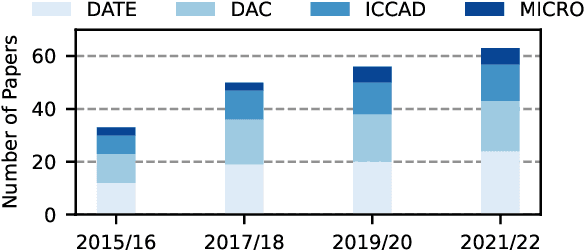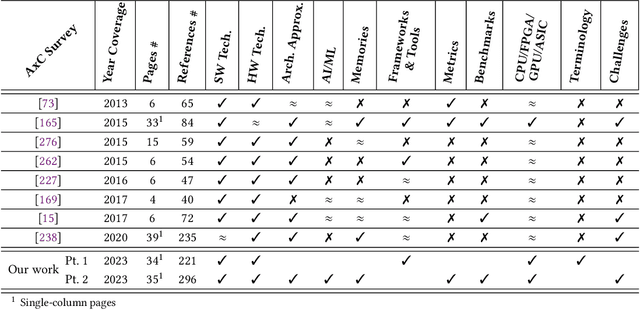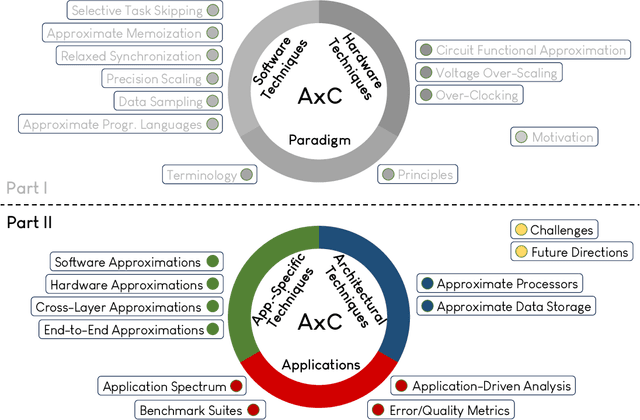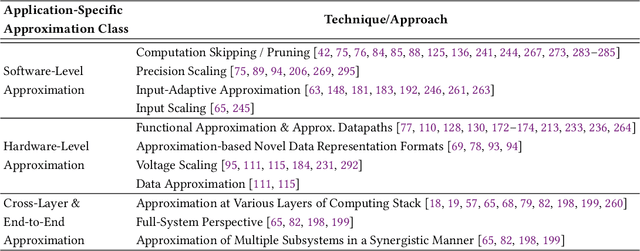Vasileios Leon
MAx-DNN: Multi-Level Arithmetic Approximation for Energy-Efficient DNN Hardware Accelerators
Jun 26, 2025Abstract:Nowadays, the rapid growth of Deep Neural Network (DNN) architectures has established them as the defacto approach for providing advanced Machine Learning tasks with excellent accuracy. Targeting low-power DNN computing, this paper examines the interplay of fine-grained error resilience of DNN workloads in collaboration with hardware approximation techniques, to achieve higher levels of energy efficiency. Utilizing the state-of-the-art ROUP approximate multipliers, we systematically explore their fine-grained distribution across the network according to our layer-, filter-, and kernel-level approaches, and examine their impact on accuracy and energy. We use the ResNet-8 model on the CIFAR-10 dataset to evaluate our approximations. The proposed solution delivers up to 54% energy gains in exchange for up to 4% accuracy loss, compared to the baseline quantized model, while it provides 2x energy gains with better accuracy versus the state-of-the-art DNN approximations.
* Presented at the 13th IEEE LASCAS Conference
Approximate Computing Survey, Part II: Application-Specific & Architectural Approximation Techniques and Applications
Jul 20, 2023



Abstract:The challenging deployment of compute-intensive applications from domains such Artificial Intelligence (AI) and Digital Signal Processing (DSP), forces the community of computing systems to explore new design approaches. Approximate Computing appears as an emerging solution, allowing to tune the quality of results in the design of a system in order to improve the energy efficiency and/or performance. This radical paradigm shift has attracted interest from both academia and industry, resulting in significant research on approximation techniques and methodologies at different design layers (from system down to integrated circuits). Motivated by the wide appeal of Approximate Computing over the last 10 years, we conduct a two-part survey to cover key aspects (e.g., terminology and applications) and review the state-of-the art approximation techniques from all layers of the traditional computing stack. In Part II of our survey, we classify and present the technical details of application-specific and architectural approximation techniques, which both target the design of resource-efficient processors/accelerators & systems. Moreover, we present a detailed analysis of the application spectrum of Approximate Computing and discuss open challenges and future directions.
 Add to Chrome
Add to Chrome Add to Firefox
Add to Firefox Add to Edge
Add to Edge